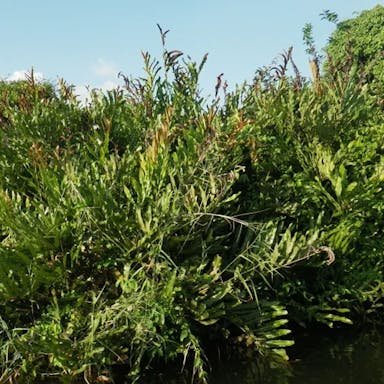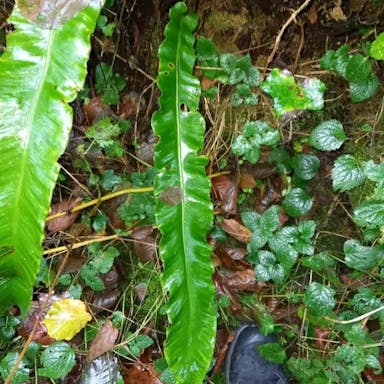Cretan brake, scientifically known as Pteris cretica, is a plant that belongs to the Pteridaceae family. It is native to the Mediterranean region, including Crete. This plant is a perennial fern. It has fronds that are pinnately compound, meaning they are divided into leaflets arranged on both sides of the central axis. The leaflets are lance-shaped and have a glossy green color. Pteris cretica does not produce flowers, as it reproduces through spores. The spores are located on the undersides of the leaflets, in structures called sori. These sori are round and covered by a protective membrane called an indusium. The spores are released when the indusium dries out and splits open. This plant is relatively easy to grow and is commonly used as an ornamental plant in gardens and indoor spaces. It prefers partial shade and moist, well-drained soil. Pteris cretica is also known for its air-purifying properties, as it can help remove toxins from the surrounding environment. In conclusion, Pteris cretica, or Cretan brake, is a perennial fern native to the Mediterranean region. It has lance-shaped, glossy green leaflets. This plant is easy to grow and is commonly used for ornamental purposes.
0
0











